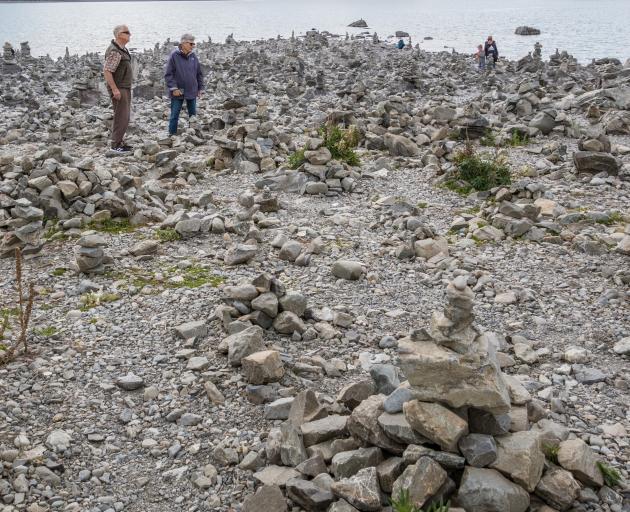
A discussion on the hundreds of rock cairns (stacks of rocks) on the foreshore has drawn varying opinions after photographs of the drastically changed shoreline were published online.
South Canterbury Forest & Bird committee member Ines Stager said stacking rock cairns was not exclusive to South Canterbury.
In Australia, fines of $750 are issued in Queensland national parks for stacking cairns.
"This may be a step too far, and requires considerable administrative resources.
"However, letting rock-stacking continue is spoiling naturalness for the sake of some people’s selfish entertainment.
"Rock cairns — to mark a route and guide travellers — have been used for centuries in many cultures.
"There is certainly a rich history around this."
Ms Stager said in New Zealand, the Department of Conservation deemed rock cairns as legitimate to mark routes.
"They are there for a purpose, not for decorating an environment that does not need it because the natural beauty is paramount."
Despite Lake Tekapo being a hydro lake — and therefore a modified landscape — she said the naturalness of the area was still high aesthetically and the area’s biota, or animal and plant life, had adapted to this environment since the lake’s construction.
She said the countless stacking of rocks impacted wildlife like tiny creatures and insects by inadvertently destroying their homes, and by moving rocks which might have provided a refuge and escape for some creatures from predators.
She said it could potentially destabilise the shoreline, as well as causing a safety concern for children in a cairn-infested area.
She said it also might affect terrestrial flora such as lichens and mosses and as well as ruining the natural beauty and tranquillity.











